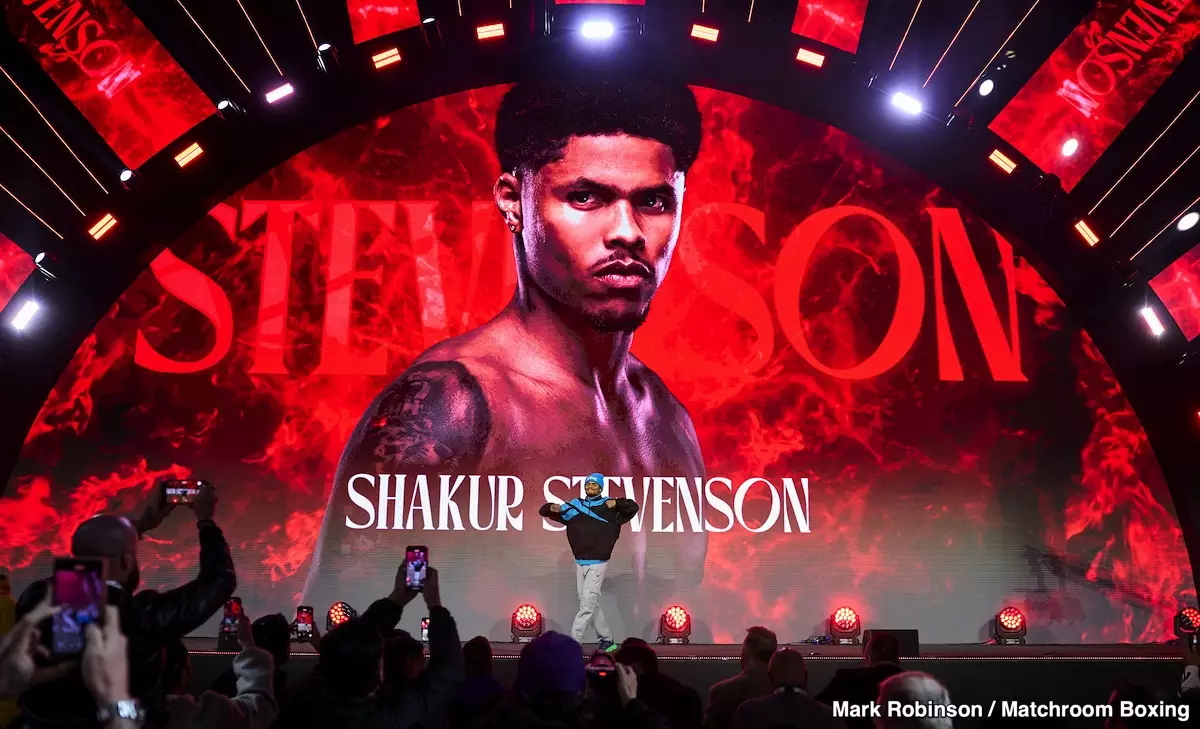By Maestro Amílcar Barnett M., The Bronx, NY, USA-
Shakur Stevenson, the reigning WBC lightweight champion, is set to face Josh Padley on February 22nd in Riyadh, Saudi Arabia. This matchup comes with a caveat: Padley is not a fighter Stevenson appears to be particularly familiar with. Despite being undefeated with a record of 15-0 and four knockouts, Padley’s career does not boast the same level of recognition as other potential opponents, such as the knockout artist Jadier Herrera. This decision raises questions about the strategy behind selecting an opponent who seems to be less formidable—some might even argue that Padley represents a move to protect Stevenson’s undefeated status.
Promoter Eddie Hearn plays a significant role in shaping the trajectory of Stevenson’s career. The choice to go with Padley over more dangerous contenders implies a calculated risk to maintain Stevenson’s winning streak while avoiding the pitfall of an unnecessary loss. Hearn’s decisions are often influenced by broader promotional equations, which prioritize the marketability of future fights. With unification bouts, particularly against fighters like Gervonta Davis, on the horizon, it is crucial for Stevenson to remain unscathed in his upcoming fights. Selecting Padley seems to be an effort to sidestep potential peril and solidify Stevenson’s recognition as a top-tier boxer in a competitive landscape.
Raising Doubts Among Fans
However, this calculated choice does not come without controversy. Many boxing enthusiasts and pundits criticize the decision to face a lesser-known opponent, reflecting a broader concern about the state of boxing: are top fighters opting for safer routes instead of engaging in high-stakes battles? While Padley’s skill set remains largely unexamined by Stevenson, the act of dismissing potentially tougher challenges raises eyebrows, with detractors labeling Stevenson as a “hype job.” This sentiment underscores a growing frustration in the boxing community, emphasizing a desire for more competitive matchups rather than sheltered paths to title defenses.
Stevenson’s Mindset
Despite the external pressures, Stevenson maintains a strong mindset going into this fight. His comments reflect a fighter poised to capitalize on the opportunity while conveying confidence in his ability. Regardless of the opponent’s credentials, Stevenson’s emphasis on diligent preparation suggests an understanding of the unpredictability of the sport. “I’m not no chump,” he asserted in an interview, affirming his commitment to the sport and acknowledgment that Padley views this fight as a once-in-a-lifetime opportunity. Stevenson’s attitude hints at a determination to rise to the occasion, amplifying the stakes regardless of perceived opponent weakness.
Eddie Hearn’s long-term vision for Stevenson appears centered on a mega-fight against Gervonta Davis, which is why the choice of the less challenging Padley makes strategic sense. The hope is that a win on February 22 will position Stevenson for a unification bout that fans have been eagerly anticipating. Thus, while the current fight may not evoke excitement, the overarching narrative continues to hinge on the potential for future thrilling matchups in the lightweight division. Boxing fans must navigate their expectations, balancing the immediate dissatisfaction with the possibility of better contests on the horizon.
Shakur Stevenson’s upcoming bout against Josh Padley encapsulates several themes of modern boxing: strategic matchmaking, market-driven decisions, and the ongoing quest for validation. As fight night approaches, anticipation will grow—not just for this particular event, but for what it could mean for Stevenson’s future in the ring.


Leave a Reply